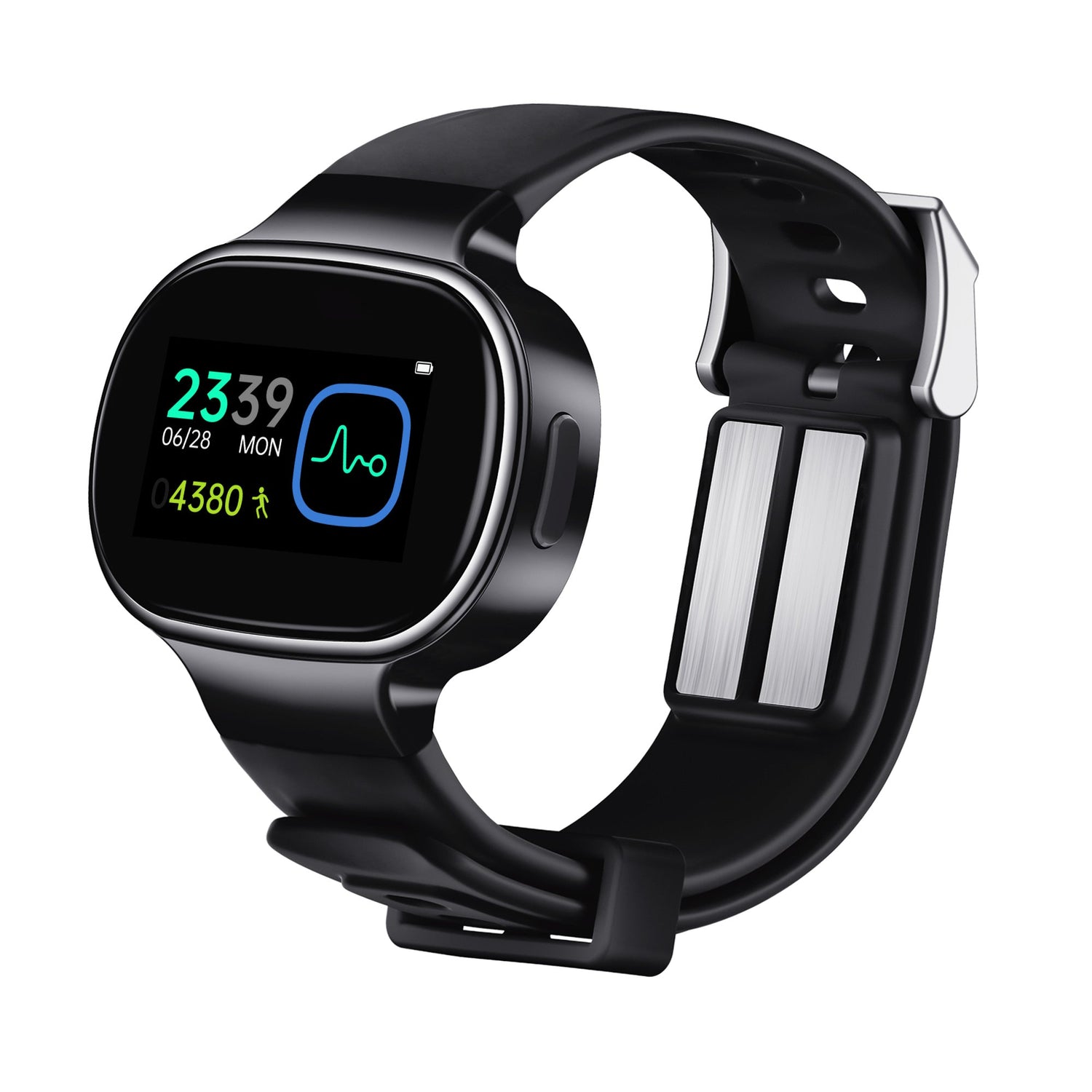Functional gastric emptying disorders, such as functional gastroparesis, impair the stomach’s ability to move food efficiently, leading to symptoms like nausea, bloating, and early satiety. Conventional treatments often provide limited relief. Recent studies demonstrate that Transcutaneous Electrical Acupoint Stimulation (TEAS), particularly at the PC6 (Median Nerve) point, can enhance gastric motility and reduce nausea. EmeTerm, a wearable device utilizing TEAS technology, offers a non-invasive solution to help manage nausea associated with these disorders.
What Is Functional Gastric Emptying Disorder?
Functional gastric emptying disorders refer to conditions where the stomach’s ability to move food into the small intestine is delayed or impaired, in the absence of anatomical obstructions. Recent large-scale epidemiological studies estimate that the prevalence of diagnosed gastroparesis is approximately 21.5 per 100,000 individuals in the United States(Camilleri,2021). Notably, over 95% of patients report chronic nausea as their leading symptom, followed by early satiety and postprandial bloating.
Unlike mechanical obstructions, these disorders are attributed to complex dysfunctions involving the autonomic nervous system, gastric smooth muscle, and enteric nerves.
Symptoms and Common Triggers
Patients with functional gastric emptying disorders frequently present with:
- Persistent nausea
- Early satiety and postprandial fullness
- Upper abdominal bloating and discomfort
- Vomiting in severe cases
These symptoms are often aggravated after meals, particularly with large portions or high-fat foods. Psychological factors such as anxiety, along with post-infectious states and hormonal imbalances, are recognized triggers contributing to disease onset and progression.
Management Strategies for Functional Gastric Emptying Disorders
Management of functional gastric emptying disorders typically requires a multimodal approach:
- Dietary modifications, including frequent small meals low in fat and fiber.
- Pharmacological therapies, such as prokinetic agents (e.g., metoclopramide) and antiemetics.
- Behavioral interventions, such as stress management and physical activity.
- Emerging neuromodulation therapies, designed to regulate the gut-brain axis.
Despite available treatments, many patients experience only partial symptom relief, highlighting the need for additional supportive therapies.
Scientific Evidence Supporting TEAS for Gastrointestinal Disorders
One emerging non-pharmacological approach is Transcutaneous Electrical Acupoint Stimulation (TEAS). TEAS involves applying mild electrical currents to specific acupuncture points through the skin — notably, the PC6 (Median Nerve) acupoint, located on the inner forearm.
Before concluding on its effectiveness, it’s important to understand the mechanism:
TEAS at PC6 is believed to modulate autonomic nervous system activity, improve vagal tone, and enhance gastric motility. Electrical stimulation activates neural pathways involved in gastric emptying and nausea control. The following are some cutting-edge research results.
A comprehensive meta-analysis published in 2024, which included 17 randomized controlled trials with a total of 3,698 participants, found that TEAS significantly reduced the incidence of postoperative nausea and vomiting (PONV) after laparoscopic surgeries. Specifically, the risk of experiencing nausea was reduced by approximately 44% compared to control groups (Lu Yuan, 2024)
In the context of chemotherapy-induced nausea and vomiting (CINV), a systematic review and meta-analysis encompassing 13 studies demonstrated that electrical stimulation at the PC6 acupoint effectively controlled general emesis, particularly during the acute phase following chemotherapy. This non-invasive approach was found to be a safe and effective complementary therapy for managing CINV. (Garcia, 2021)
These findings suggest that TEAS, particularly when applied to the PC6 point, can be an effective non-pharmacological option for managing nausea across various clinical scenarios. However, individual responses may vary, and TEAS should be considered as part of a comprehensive treatment plan under professional medical guidance.

EmeTerm: A Wearable, Non-invasive TEAS Device
Building upon the principles of TEAS, EmeTerm provides a wearable, non-invasive solution designed to manage nausea symptoms associated with functional gastric emptying disorders. EmeTerm delivers calibrated electrical pulses to the PC6 acupoint through the skin, offering a drug-free alternative for symptom management.
It is important to note that EmeTerm is not a curative treatment for functional gastric disorders. Rather, it serves as an adjunctive tool to help mitigate nausea and improve quality of life. Users are advised to seek medical consultation for a comprehensive diagnostic and therapeutic approach.
Functional gastric emptying disorders present significant challenges to patients and clinicians alike. Advances in neuromodulation, such as TEAS technology, represent an encouraging frontier for symptom management. By merging traditional acupoint theory with modern engineering, solutions like EmeTerm provide a pathway toward more accessible, patient-centered care — offering comfort, dignity, and renewed hope for those navigating chronic gastrointestinal disorders.
References
1. Camilleri, M., et al. (2021). Epidemiology, etiology, and treatment of gastroparesis: Real-world evidence from a large US national claims database. Gastroenterology, 161(4), 1230–1239.
2. Yuan, L., Quan, S. J., Li, X. Y., Chen, B. Z., Huang, Y. B., & Zheng, H. (2024). Transcutaneous electrical acupoint stimulation for preventing postoperative nausea and vomiting after laparoscopic surgery: A meta‐analysis. Journal of Nursing Scholarship.
3. Garcia, G. T., Ribeiro, R. F., Faria Santos, I. B., Gomes, F. D. C., & Melo-Neto, J. S. D. (2021). Electrical stimulation of PC 6 to control chemotherapy-induced nausea and vomiting in patients with cancer: a systematic review and meta-analysis. Medical Acupuncture, 33(1), 22-44.

